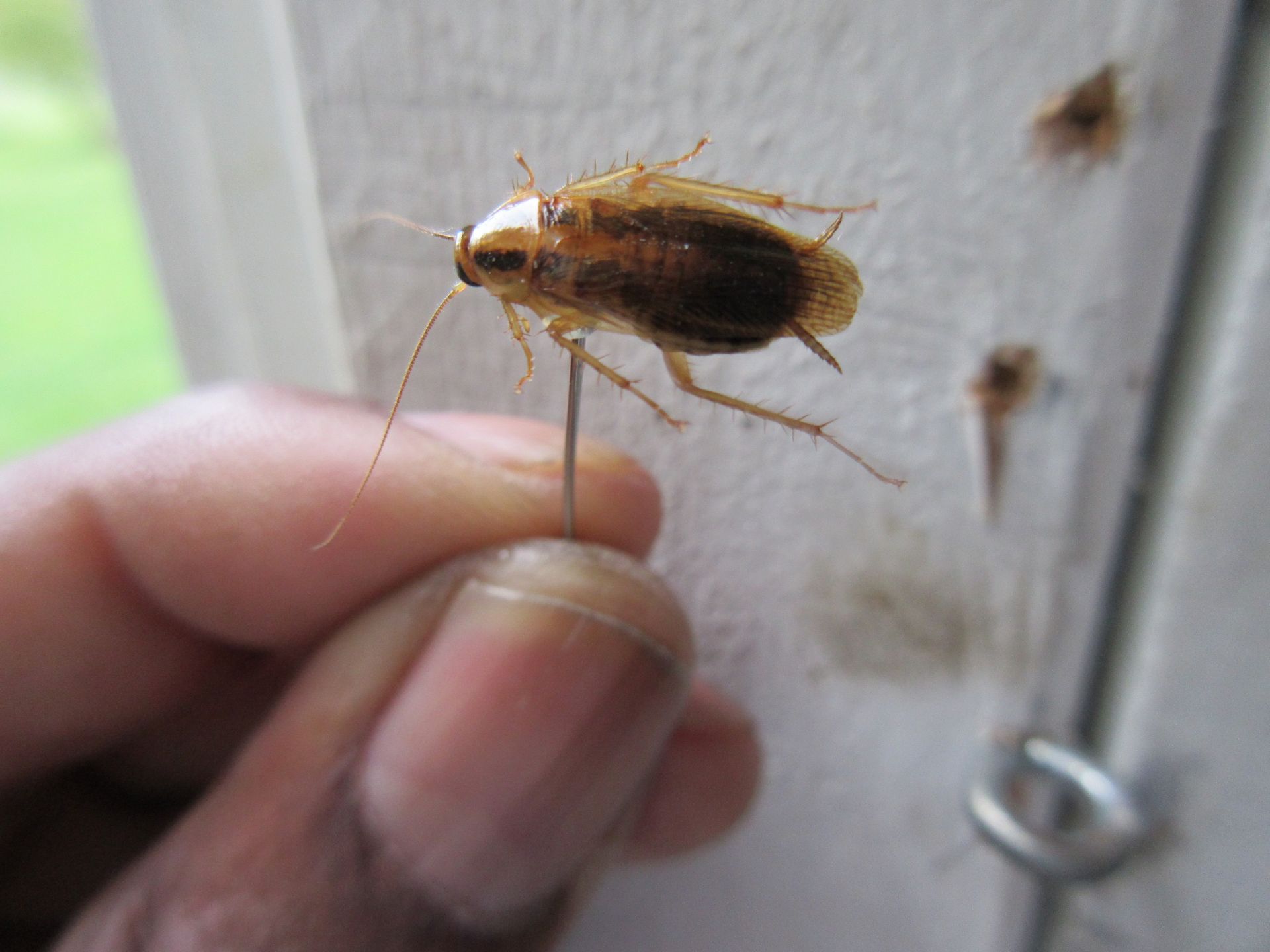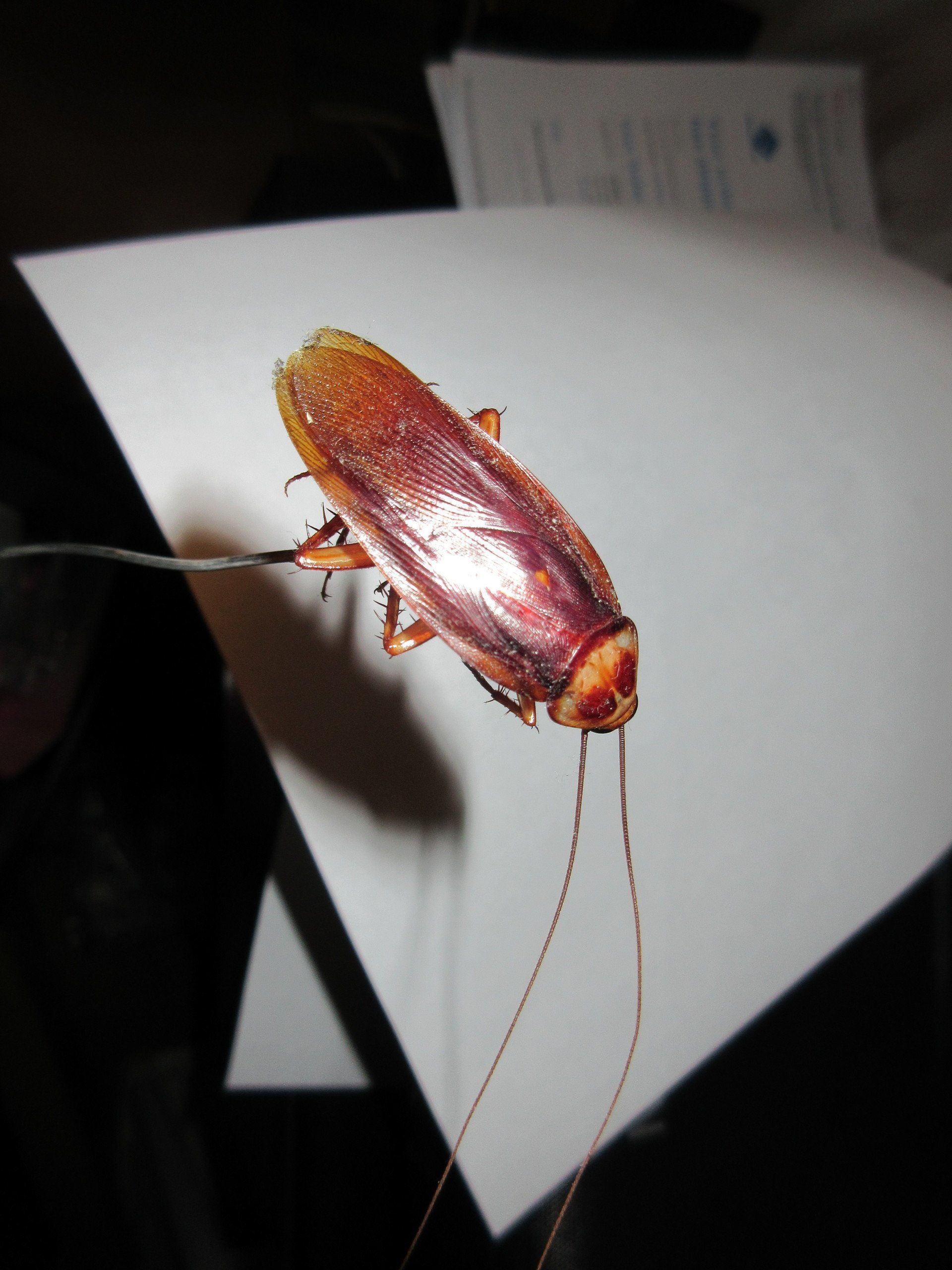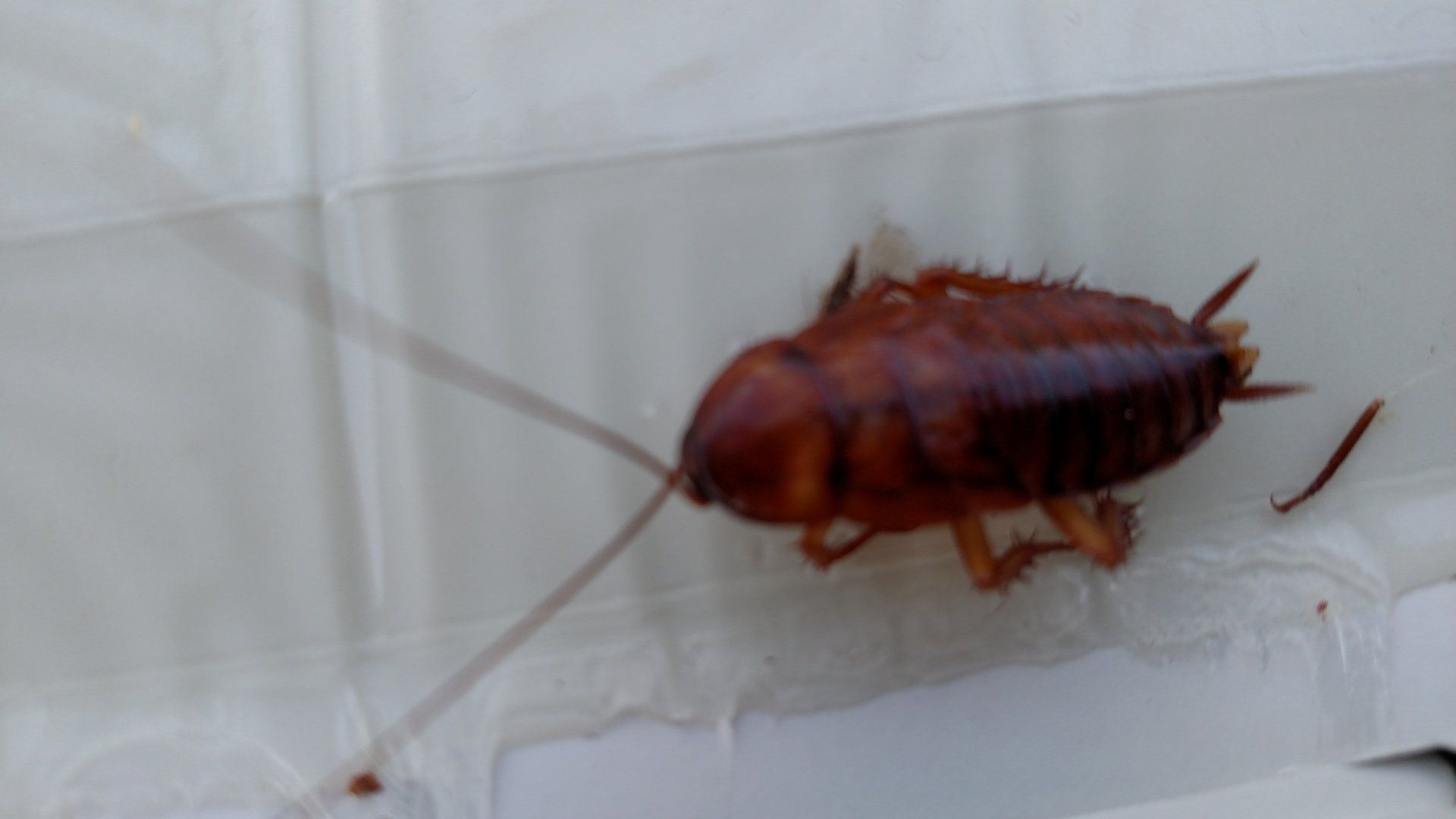The German cockroach is the most common and widespread household cockroach. Adults are 1/2 to 5/8 inch long and light brown to tan bodies. There are two dark brown stripes on the pronotum, running from front to back. Both adult males and females have well-developed wings, but they do not fly. German cockroaches are most common in areas of the house in which there are abundant food and water, high humidity, and safe harborage. They are usually found in kitchens and bathrooms. However, they may invade other rooms if sanitation is poor or if the population is large.
German cockroaches are active at night, searching for food and water. Small nymphs usually remain within harborages, foraging for food scraps there. Newly hatched nymphs must also feed on cockroaches feces. Seeing adults or nymphs during the day is a clue that the population is large.
While females are producing and carrying an egg case, they are inactive. They rarely feed or seek water and remain hidden. This behavior tends to protect them and their young from pest control efforts. German cockroaches have small yellowish and brown egg case. German cockroach egg case contains from 30 to 40 eggs. The female carries the egg case on the tip of her abdomen until about 24 hours before the eggs are ready to hatch. Then, she drops the egg case and leaves the nymphs to fend for themselves. Adult female lives for about six months. On average, she will produce one egg case a month, or about 150 to 240 nymphs in all. The average life cycle is about 100 days under favorable conditions.
How to Prepare Treatment:
The first order of business is the "Clean-out." You will need to remove everyday used items from kitchen cabinets. You can place them on the kitchen or dining room table covered with a sheet. Items that normally requires washing before use can remain in the cabinet, however items must be washed before use. Bathrooms vanity and cabinet must be emptied (items can be place in tub and covered). Dresser draws
may or may not need to empty or pulled out, it depends on whether they are infested. All children toys must store away and covered. Make plans to be away from home at least an hour after treatment.
What to do after treatment:
You will need to wipe off counter tops in kitchen and bathrooms. Try not to get heavy soapy water along the back seams of counters or along baseboards. Do not wipe cabinet hinges. No cleaning is necessary under sinks. Do not move any bait stations. On re-entry, open windows or doors if you feel ventilation is needed. If you have questions, call Management, they will get answers from Pest Control Co.
Treatment Protocol:
Initial Clean-out plus 2 - 4 follow-up treatment on a month-to-month basis. In severe infestations a second treatment is needed in 2 weeks before monthly treatments begins.
Your treatment will consist of a residual spray to cracks & cervices, baseboards and any place where cockroach travel or hide. Vacuum & Baiting will be applied as needed followed by fogging. Follow-up treatment in most cases will be required for at 2 least months. How many follow-up treatments will depend on the severity of infestation? In apartment buildings a bi-weekly follow-up is likely needed. You will once again enjoy your home free from cockroaches.



